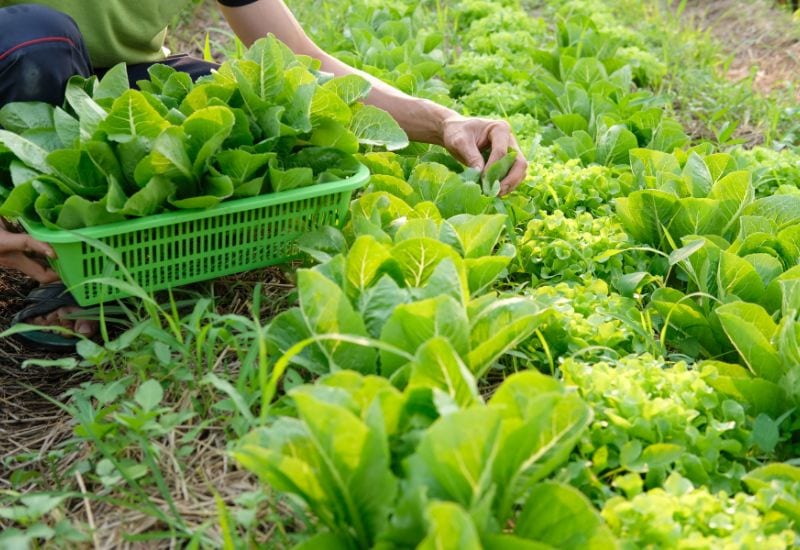
Lettuce is one of the first vegetables you can harvest from your garden. It doesn’t take long to grow, and its crisp, juicy leaves are often ready to pick in just 50 days. But sometimes, it’s faster and easier to regrow the same plant rather than preparing the soil and sowing a new crop.
When using the right harvesting method, a lettuce plant will grow new leaves in 2 weeks and will keep you harvesting for at least a month.
The best way to harvest lettuce so that it grows back is by picking the outer leaves using the cut-and-come-again method. Alternatively, you can regrow lettuce from its crown or the cluster of small leaves in the middle of the plant. Depending on the method you use, lettuce will grow back at least once, but the plant will eventually start growing smaller, bitter leaves.
Now, I can hear you thinking, “Can we keep regrowing the same lettuce plant forever?” I wish we could, but sadly, after a while, the plant will start to yield smaller, slightly bitter leaves. However, the good news is that with a few clever tricks, we can extend our lettuce harvest season, even under the sweltering summer sun!
This guide we’ll walk you through how to harvest your lettuce for a repeat harvest and explain why endless regrowth can be a bit of a myth.
When Is Lettuce Ready to Harvest?
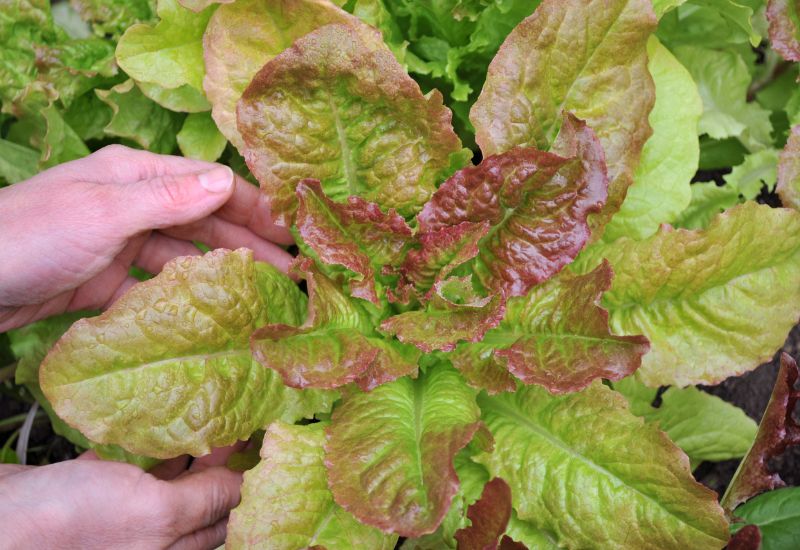
Lettuce typically takes between 6 to 8 weeks before it’s ready to harvest. Butterhead and oakleaf varieties mature first and some cultivars can be picked in as little as 35 to 40 days.
Bibb and cos or romaine lettuces take about 60 days before you can start picking them, or up to 80 days if you want to harvest a well-developed head. Meanwhile, crisphead varieties can take up to 12 weeks to form a tight head.
You can harvest lettuce at any point during its growth cycle. Seedlings are edible, and thinnings can be added to your salad a week after the seeds germinate.
Young, baby lettuce plants are ready to pick in just 4 weeks. But for a bigger harvest, it’s best to wait around 50 days after sowing before you start picking.
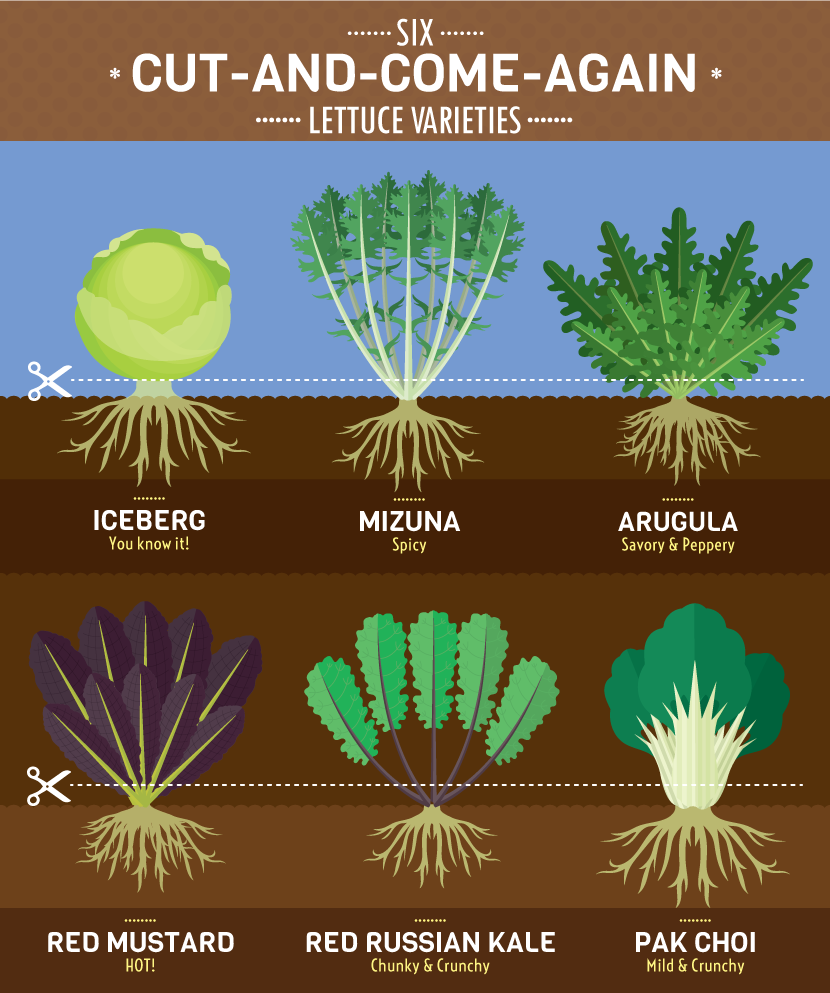
Source: Fix.com Blog
Depending on the variety, you’ll know that lettuce leaves are ready to harvest when they are between 8 and 15 cm long (around 3 to 6 inches).
Looseleaf, Bibb and romaine lettuces taste best as an immature crop, when the leaves are a dark green and have a tender texture.
Crisphead lettuce is best picked when it reaches maturity, when the leaves overlap in a tight bunch and the head yields slightly ro pressure.
2 ways to Harvest Lettuce So It Grows Back
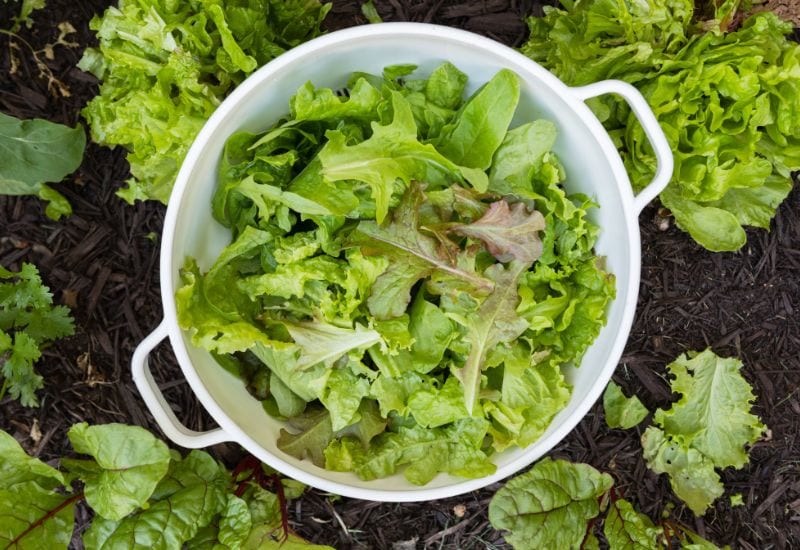
There are two ways you can harvest lettuce so that it keeps growing: using the cut-and-come-again method, or regrowing lettuce from the crown. Let’s take a closer look at each method.
1. The Cut-and-Come-again Method
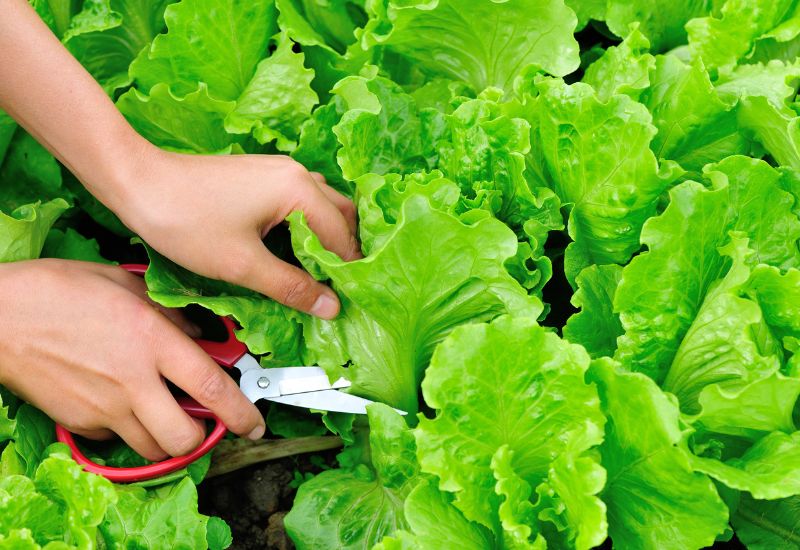
The aim of the cut-and-come-again method is to regularly harvest the older, outer leaves of your lettuce plant while leaving the inner crown intact. It’s basically a form of pruning that keeps the plant focused on growing new leaves rather than reaching maturity and producing flowers.
This method works best on non-heading lettuce varieties, such as looseleaf and Bibb, but you can also use it for romaine lettuce.
You can start harvesting the outer leaves of your lettuce when they are at least 10 cm (4 inches) long. Select a few of the outer, mature leaves, and prune them with a sharp pair of scissors. Leave the smaller leaves in the center intact.
They should be big enough to harvest in 10 to 14 days, and the plant will grow a new crown in the meantime. Keep picking the lettuce leaves until the plant starts bolting, or spending its energy on blooming and going to seed.
For best results, try harvesting your lettuce in the morning, when the leaves are crisp and sweet, and avoid picking too many leaves at a time. This way, the plant will have enough energy to grow more leaves, and you can pick it for longer.
2. Regrowing a Lettuce Head
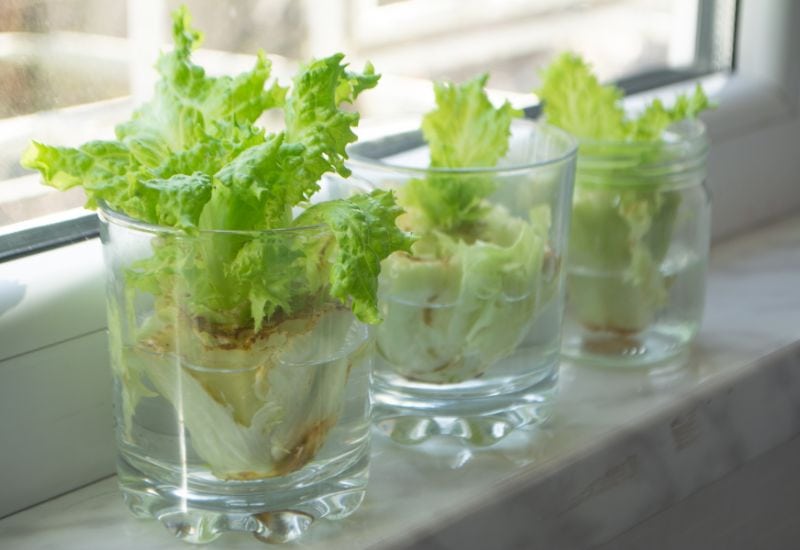
Lettuce varieties that form a thick, compact head, such as iceberg lettuce, are easier to harvest by cutting the entire head, rather than picking individual leaves. But if you cut them the right way, your lettuce will grow a second, albeit smaller, harvest.
The trick is to leave most of the inner crown intact. Cutting directly above the soil line can permanently damage the plant, and it’s unlikely that your lettuce will produce new growth.
Hold the lettuce head in one hand, then use a stainless steel knife to cut it about 5 cm (2 inches) above the ground. If the inner crown is mostly intact, you will see new leaves emerge after 3 – 5 days, and you can harvest them using the same method after about 2 weeks.
Keep in mind that crisphead varieties will not form a new head if you use this method. They will grow a cluster of new leaves, but they won’t clump together to form a tight head. However, non-heading varieties, and even romaine lettuce, will produce a decent second harvest.
How Many Times Can You Regrow Lettuce?
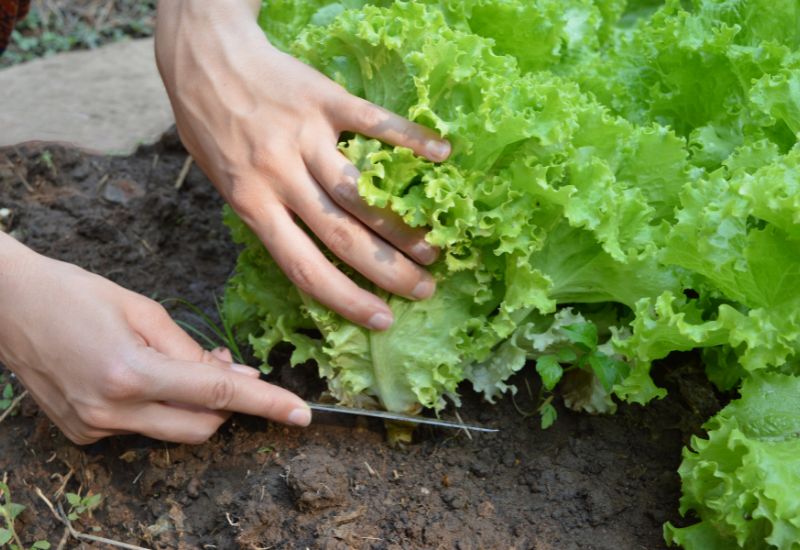
On average, you can regrow and harvest the same lettuce plant at least once. And, depending on the lettuce variety and how you pick it, you can harvest a new flush of leaves for at least a month.
With heading lettuce types or if you’ve already cut off most of the head when harvesting, your lettuce will regrow once. At a push, and if you’re providing it with ideal growing conditions, maybe you can get a third harvest. However, the leaves will be significantly smaller.
With cos (romaine), Bibb, and looseleaf lettuce varieties, you can harvest individual outer leaves 3 or 5 times using the cut-and-come-again method. After that, the plant will start growing smaller leaves, with a noticeably bitter taste, and tough, stringy stems.
Can You Regrow Lettuce Indefinitely?
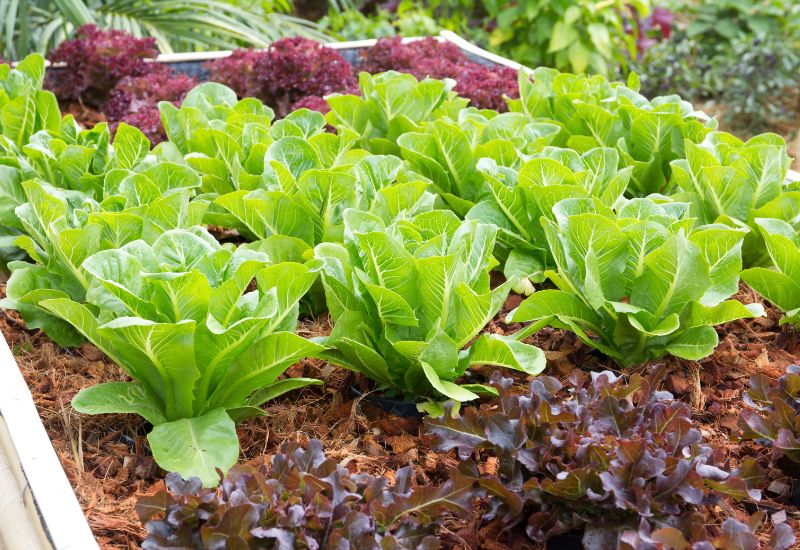
The short answer is no, for two main reasons.
Lettuce is an annual plant, which means that it only lives for one growing season. It will spend the first part of its life developing roots and growing leaves. It will then spend all its energy on producing flowers and going to seed. In the process, it will store as many nutrients as it can in the seeds, to ensure that the young plants will thrive after seed germination. As a result, it will expend fewer nutrients on growing new leaves.
Lettuce is also a long-day crop. This means that when the days are longer than 12 hours, the plant will slowly enter the blooming and seeding part of its lifecycle. Paired with hot temperatures, your lettuce is guaranteed to start bolting at some point during summer.
Another thing to keep in mind is that lettuce plants naturally produce a milky, latex-like substance called lactucarium. This bitter substance helps the plants seal cuts on leaves and stems, and protects plants from pests and grazing wildlife — or, in this case, gardeners who really love their salads.
Normally, this bitterness is quite mild. But if your lettuce crop is suffering from water stress, not enough nutrients, high temperatures, or if the plant has decided it’s nearing the end of its growth cycle and starts bolting, the bitter taste will become much more noticeable.
Unless you manage to find a way to grow lettuce in a cool spot, with plenty of access to water and nutrients, and you manage to keep day length in check, Mother Nature will eventually follow its course. Your lettuce will grow fewer, smaller leaves, and they will develop an increasingly bitter taste with each harvest.
However, there are a few things you can do to prolong your lettuce harvesting season.
5 Ways to Maximize Your Lettuce Harvest and Enjoy It Longer
Here are some must-know gardening tips that will prolong your lettuce growing season, and even keep you busy harvesting lettuce despite the summer heat.
1. Plant Lettuce Seeds Every 2 Weeks
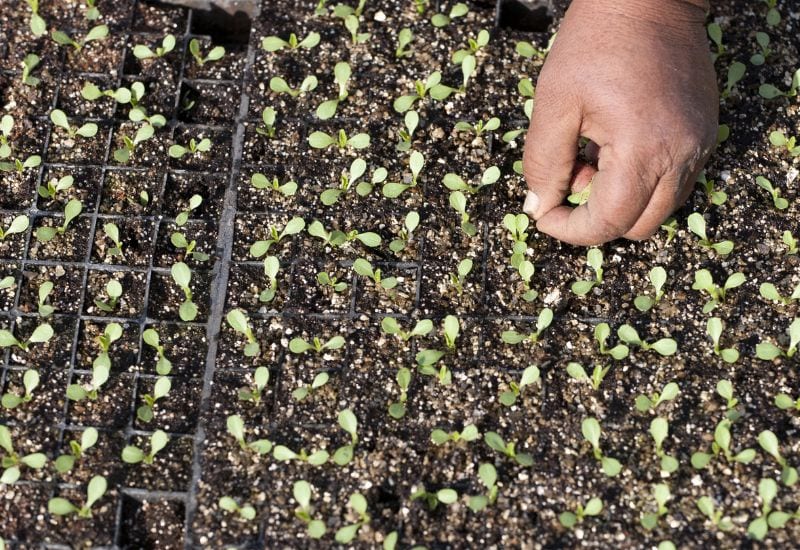
Succession planting is the easiest way to ensure that you can enjoy fresh lettuce for longer. Lettuce seeds don’t take long to grow, and some varieties are ready to harvest after just 40 days. Sow your first batch of seeds in early spring, then plant more seeds once every 2 weeks until July.
2. Provide Shade
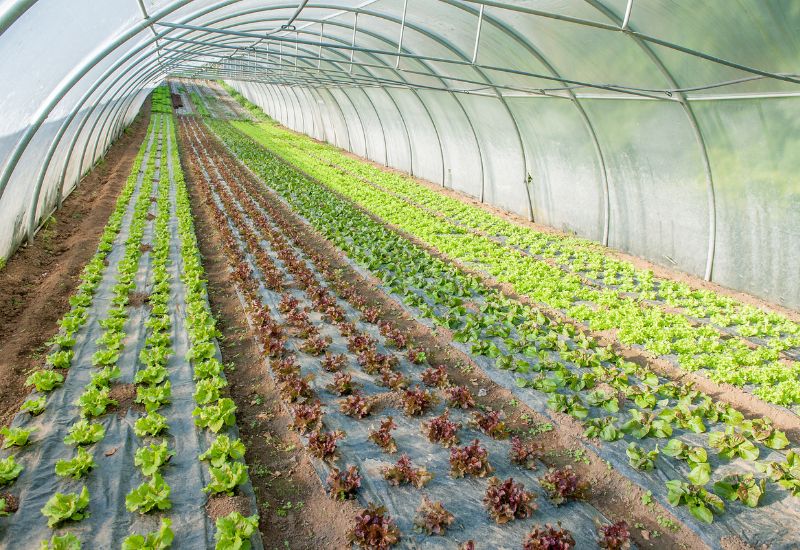
Shading screens and shade cloth are your allies in keeping your lettuce cool and preventing bolting. They help trick the plant’s internal clock by making the days seem shorter, and allow you to keep growing lettuce during the summer months. As a bonus, they will also keep lettuce safe from pests.
3. Water, Mulch, and Fertilize Regularly
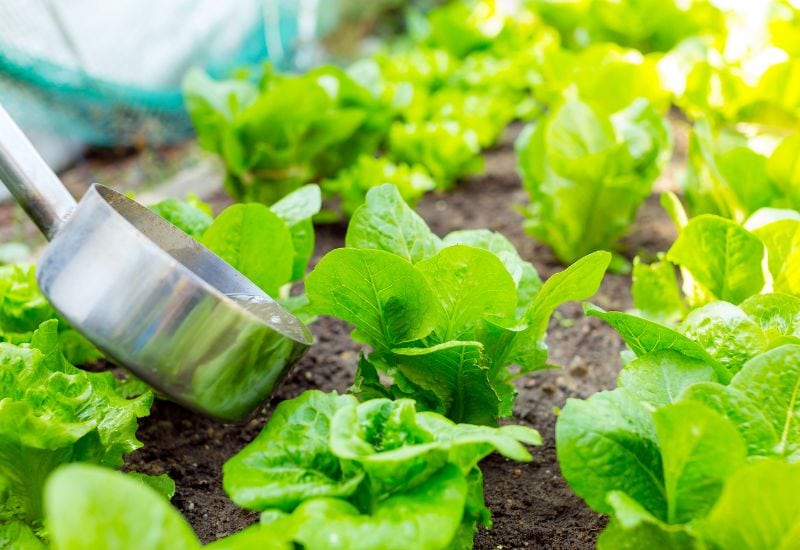
Lettuce plants are more likely to start bolding in dry conditions, or if they’re not receiving enough nutrients. Water-related stress will also cause the lettuce leaves to turn bitter.
To keep your plants healthy and productive, keep the soil moist but not soaked, add a layer of mulch around the plants to preserve soil moisture, and give them a liquid, nutrient-rich fertilizer once every two weeks.
4. Plant Heat-resistant Lettuce Varieties
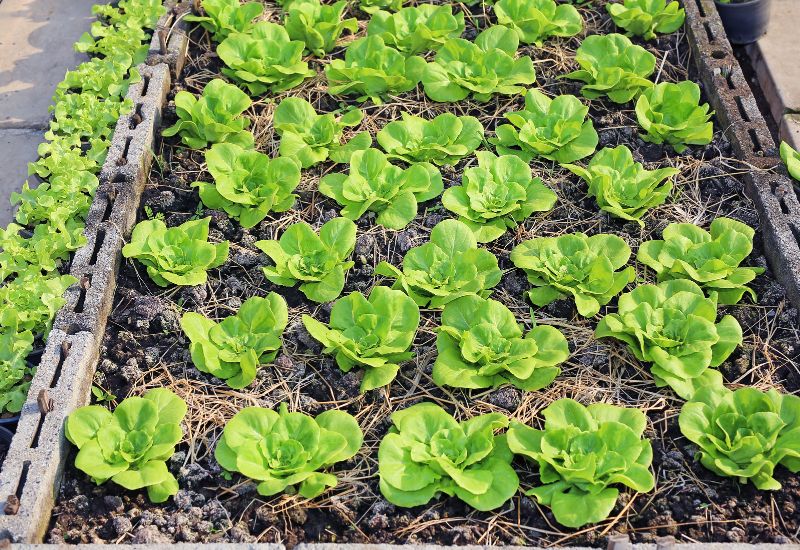
Lettuce will start to turn bitter and bolt in temperatures above 21°C (70°F). Butterhead, looseleaf, and oak leaf lettuce varieties are more heat tolerant, as well as resistant to bolting.
They are the best choice if you’re planning to grow lettuce in summer. Crisphead and romaine lettuces are sensitive to heat, although some cultivars, such as Jericho, Nevada, and Cimarron, are more bolt-resistant.
5. Plant a Mix of Heading and Non-heading Lettuces
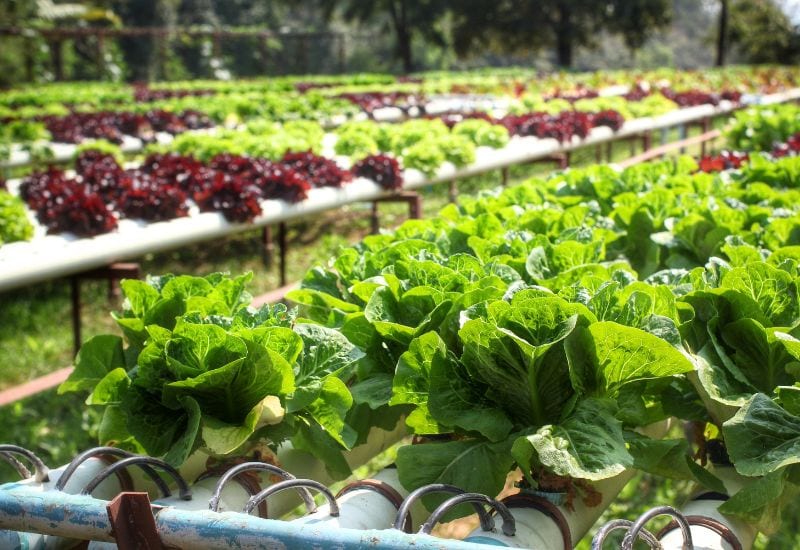
Growing several lettuce cultivars in one bed will add texture and color to your salad bowl, but also help your garden produce a longer harvest.
Romaine and looseleaf lettuces can be harvested first, by picking the outer leaves once every two weeks.
You can then harvest your heading lettuces by cutting the head 2 inches above the soil line, and give the plants another 2 to 3 weeks to grow a new flush of leaves.
Check out our guide to 19 lettuce varieties that would make a tasty addition to your vegetable garden.
Grow, Snip, Repeat
One of the best things about lettuce is that harvesting it repeatedly is surprisingly easy. When using the cut-and-come-again method, it will grow new leaves in just 2 weeks, and you can pick the same plant up to 5 times.
But remember: you can only harvest lettuce so many times before the leaves start turning bitter and the plant decides to spend all its energy on bolting. And when that happens, it’s always best to just start a new lettuce crop.

Written By
Amber Noyes
Amber Noyes was born and raised in a suburban California town, San Mateo. She holds a master’s degree in horticulture from the University of California as well as a BS in Biology from the University of San Francisco. With experience working on an organic farm, water conservation research, farmers’ markets, and plant nursery, she understands what makes plants thrive and how we can better understand the connection between microclimate and plant health. When she’s not on the land, Amber loves informing people of new ideas/things related to gardening, especially organic gardening, houseplants, and growing plants in a small space.
